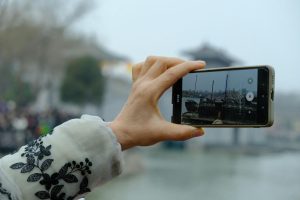The Evolution of Recruitment: From Classified Ads to AI Matching
The recruitment process has come a long way since the traditional method of classified ads in newspapers. The rise of technology has brought about a revolution in the recruitment process, making it more efficient, accurate, and faster. With the introduction of artificial intelligence (AI), the recruitment process has undergone a significant transformation. From sifting through piles of resumes to using advanced algorithms for candidate matching, the evolution of recruitment has been remarkable. In this article, we will take a deeper look at the evolution of recruitment from classified ads to AI matching, and how it has changed the way organizations attract, select, and hire top talent.
The Age of Classified Ads
Before the advent of the internet, the primary method of recruitment was through classified ads in newspapers. Companies would publish job advertisements in the classified section of the newspaper, and interested candidates would send in their resumes by post. This method was time-consuming and often involved manual screening of resumes to shortlist candidates. However, this method was the only way to reach a widespread audience at that time.
The limitation of classified ads was that they were limited to the local area and only targeted a specific audience. Companies had to spend a considerable amount of money to publish advertisements in newspapers, and there was no guarantee that they would attract the right candidates. Moreover, candidates had limited access to job opportunities, and it was challenging for them to find jobs outside their geographic area.
The Emergence of Online Job Boards
The internet brought about a significant shift in the recruitment process with the emergence of online job boards. Job seekers could now access a wide range of job opportunities from anywhere in the world. Companies could also reach a larger pool of candidates by posting job ads on popular job boards. This method made it easier for companies to receive a high volume of applications, but it also led to an increase in unqualified or irrelevant applications.
Online job boards also opened up the possibility of employers proactively searching for potential candidates through online resume databases. This shift from passive to active job searching created a tremendous amount of data, making it difficult for employers to identify the right candidates. This is where AI came into play.
The Impact of AI in Recruitment
The use of AI in the recruitment process has revolutionized the way companies hire. It has made the process more efficient, accurate, and unbiased. AI-powered recruitment platforms use advanced algorithms to match candidates with job postings based on their skills, qualifications, and experience. This eliminates the need for manual screening of resumes, saving recruiters a significant amount of time and effort.
Moreover, AI-powered platforms can analyze candidate data to predict job performance and cultural fit, helping companies make more informed hiring decisions. These platforms also provide candidates with a personalized experience, allowing them to showcase their skills and qualifications more effectively.
Video Interviews and Assessments
AI has also transformed the traditional interview process by introducing video interviews and assessments. This has made the hiring process more efficient and convenient for both employers and candidates. Candidates can complete video interviews and assessments at their convenience, eliminating the need for scheduling and face-to-face meetings. AI algorithms can also analyze these interviews and assessments to evaluate a candidate’s soft skills and cultural fit.
Elimination of Bias
One of the most significant advantages of AI in recruitment is the elimination of bias in the hiring process. Traditional methods of recruitment were often prone to human biases, which could result in discrimination based on gender, race, or ethnicity. With AI, there is no room for such biases as it only focuses on the candidate’s qualifications and skills, making the process fair and unbiased.
The Future of Recruitment
The evolution of the recruitment process is an ongoing process, and with the rapid development of technology, the future of recruitment is certainly exciting. Virtual reality (VR) and augmented reality (AR) are already being integrated into the hiring process, allowing candidates to experience the workplace and company culture before joining. Chatbots are also being used for initial candidate screening, making the process even more efficient.
With the rise of AI, recruiters are also shifting towards a more data-driven approach to recruitment, leveraging analytics to make better hiring decisions. The future of recruitment will likely see a more personalized and streamlined experience for both employers and candidates, with AI playing a crucial role in candidate sourcing, assessment, and selection.
In Conclusion
The evolution of recruitment from classified ads to AI matching has transformed the way organizations attract, select, and hire top talent. Technology has made the process more efficient, accurate, and unbiased, allowing companies to make more informed hiring decisions. As we move towards a more technology-driven future, the recruitment process will continue to evolve, making it easier for companies to find the right candidates and for candidates to find their dream jobs.











